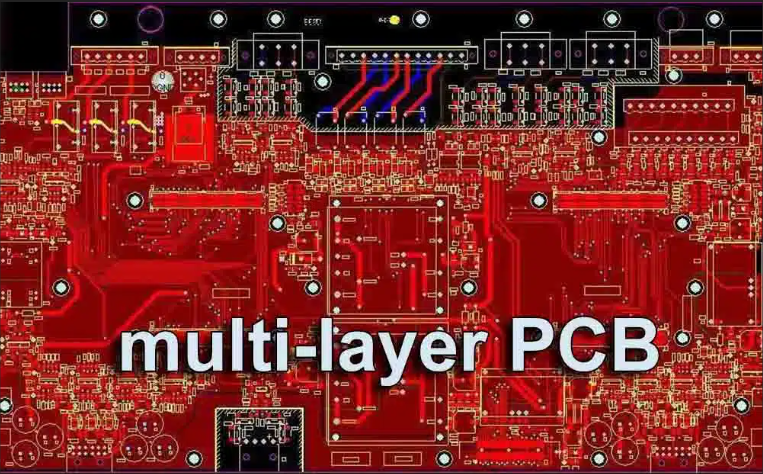Future Market Development of Rigid High-Layer Count PCBs Technological Evolution and 2030 Outlook
1. Market Scale and Growth Drivers

According to Prismark's Q4 2023 report, the global high-layer PCB (≥16L) market has reached $7.8 billion, with an expected 11.2% CAGR from 2024-2030. Key growth drivers include:
5G Infrastructure: PCB value per base station increased from 320(4G) to 550 (CAICT data)
AI Server Boom: NVIDIA DGX H100 systems contain $480 worth of 32L+ PCBs
Automotive Electronics: L4 autonomous vehicles require 18-24 layer PCBs (Bosch whitepaper)
2. Critical Technology Pathways
2.1 Ultra-Low Loss Materials
Next-gen material targets (per IPC-4101E):
Parameter | Current | 2025 Target | 2030 Target |
Dk@10GHz | 3.8 | 3.5 | 3.2 |
Df@10GHz | 0.005 | 0.003 | 0.0015 |
Thermal Conductivity (W/mK) | 0.8 | 1.2 | 2.0 |
Z-CTE (ppm/°C) | 2.5 | 2.0 | 1.8 |
Panasonic's MEGTRON 8 achieves Df=0.002@40GHz but costs 320% more than FR4.
2.2 3D Integration Breakthroughs
Any-Layer Interconnect: ≤40μm laser microvias (vs. 50μm standard)
Embedded Components: ±15μm placement accuracy for 0402 devices
Hybrid Bonding: Cu-Cu direct bonding >200MPa (SEMI standard)
Tesla's Dojo 2.0 uses 72L PCBs with 12,000 microvias, reducing power density by 18W/cm².
3. Emerging Applications
3.1 6G Infrastructure
Frequency Bands: 92.3-95.1GHz (WRC-23 allocation)
Technical Requirements:
①Phase consistency: ±0.5°@100GHz
②Insertion loss: <0.03dB/mm
③Thermal deformation: ≤5μm/100°C
Huawei lab tests show 37% lower loss at 95GHz using ceramic-filled 32L backplanes.
3.2 Quantum Computing Substrates
Superconducting circuit demands:
①Surface roughness Ra<0.1μm
②Residual stress<10MPa
③Flux pinning density<5×10⁴/cm²
IBM's quantum boards achieve 18 layers with stable 0.0008 loss@5GHz at 4K.
4. Manufacturing Revolutions
4.1 Smart Lamination Systems
Metric | Conventional | Smart Press (2025) | Improvement |
Temperature Uniformity (°C) | ±3 | ±0.5 | 83% |
Pressure Control (psi) | ±15 | ±2 | 87% |
Thickness Variation (μm) | ±25 | ±8 | 68% |
Energy Consumption (kWh/m²) | 18 | 9.5 | 47% |
Next-gen press specifications:
ASMPT's NeoDyn 9000 achieves 98.7% yield for 32L boards using AI compensation.
4.2 Sustainable Manufacturing
Cyanide-free plating: Reduces COD from 3500mg/L to 50mg/L
Plasma metallization: 90% chemical reduction
Bio-resins: 42% lower carbon footprint (UL ECVP certified)
5. Supply Chain Strategies
5.1 Localization Progress
Material | Import Reliance (2023) | 2025 Target |
High-Frequency CCL | 82% | 45% |
Specialty Resins | 91% | 60% |
E-Glass Fabric | 76% | 50% |
Kingboard's KT-9300 material shows ±0.03 Dk stability in Huawei 5G tests.
5.2 Equipment Breakthroughs
①Laser drilling: ±1μm positioning accuracy
②LDI: 8μm line capability
③AOI: 99.99% defect detection
SMEE's 28nm lithography adaptation enables 10μm PCB lines.
6. Standards Evolution
New Specifications:
①IPC-6012EM (2025): 112Gbps SI requirements
②IEC 61189-8: Thermo-mechanical reliability methods
Certification Updates:
①Automotive: AEC-Q104 adds 3000 thermal cycles
②Aerospace: AS9100 sets ≤0.2μg/cm² ionic contamination
7. 2030 Projections
Metric | 2025 Baseline | 2030 Target | Technology Path |
Max Layers | 56 | 102 | mSAP + semi-additive |
Min Line/Space (μm) | 12/12 | 5/5 | EUV direct-write |
Thermal Conductivity | 1.8 | 4.5 | Graphene composites |
Yield Rate (%) | 95.3 | 99.5 | Industry 4.0 |
Cost ($/dm²) | 18.7 | 9.2 | 92% material utilization |
8. Regional Market Shifts
(IDC 2024 projections)
APAC: 73% share (China 55%)
North America: $8.7B automotive segment (19% CAGR)
Europe: 38% industrial control applications
9. Risk Mitigation
Technical Risks:
5+ year material R & D → Industry-academic labs
Rising equipment costs → AI predictive maintenance
Market Risks:
Geopolitical disruptions → "China+2" supply chains
Demand volatility → 30% flexible capacity buffer
Engineering Characteristics and Technical Implementation of Rigid High-Layer Count PCBs
Technical Product Analysis of Rigid High-Layer Count PCBs and Application Practices
